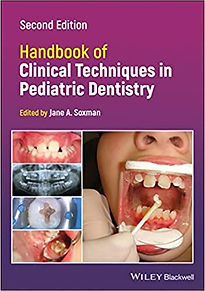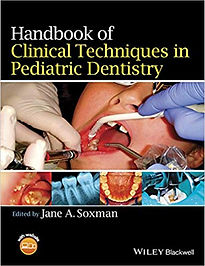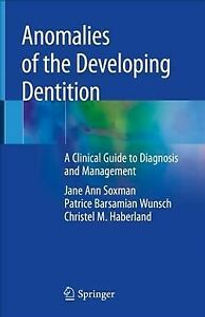DR. JANE A. SOXMAN PUBLICATIONS
Textbooks
The Second Edition of the Handbook of Clinical Techniques in Pediatric Dentistry features updated and expanded information on pediatric clinical dentistry, including eight new chapters written by educators with special interest in each topic. Since publication of the first edition, non-invasive treatment is at the forefront of pediatric dental care, and the new edition reflects this, with multiple options and techniques for non-invasive treatment. The book is filled with photographs for improved understanding and guidance through the procedures described.
The book is an easy-to-read guide to clinical pediatric dentistry with practical evidence-based information for dental students, assistants, hygienists, residents in both general dentistry and specialty training, and general and pediatric dentists. Handbook of Clinical Techniques in Pediatric Dentistry is a valuable resource for assuring excellence in care for our youngest patients.
The Handbook of Clinical Techniques in Pediatric Dentistry provides the clinician with an increased level of expertise and skills for timely identification and intervention for various presentations in the developing dentition. It also clearly describes procedures for treatment in the primary and young permanent dentitions, including pulp therapy for primary and young permanent molars, extractions, space maintenance, and more. The most commonly encountered treatment needs are discussed with the goal of increasing clinician and staff confidence while decreasing chair-time and stress.
With an emphasis on practical instruction, The Handbook of Clinical Techniques in Pediatric Dentistry is ideal for pediatric and general dentists, pediatric residents, and dental students taking clinical pediatric courses.
This book is an up-to-date, succinct, and easily accessible reference on the diverse anomalies that may arise in the developing dentition, including those relating to crown size and shape, tooth formation, tooth eruption, tooth number, and enamel and dentin formation. For each anomaly, information is provided on clinical and radiographic features, etiology, and management. Attention is also drawn to clinically relevant associations among anomalies. The inclusion of numerous high-quality photographs and images will assist the practitioner in establishing the correct diagnosis in each patient and in understanding the rationale for specific interventions. The book will also facilitate discussion of the anomaly with the caregiver or patient, including with respect to genetic and other implications and the appropriate treatment path. Anomalies of the Developing Dentition is an excellent clinical guide to the subject that will aid in timely identification and appropriate management. It will meet the needs of students and practitioners in multiple disciplines of both medicine and dentistry.
PDFs of Dr. Soxman's Articles
Full List of Dr. Soxman's Publications and Interviews



Dr. Jane A. Soxman
Pediatric Dentistry


